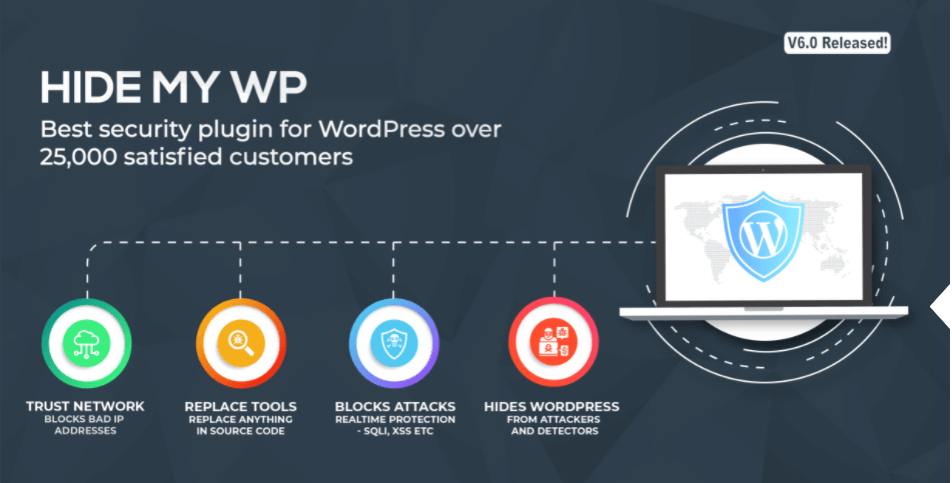WordPress is the most popular CMS now on the internet. This popularity comes with a price: Hackers. WordPress security is crucial to keep your website going without any issues. If you are a WordPress user, you must have already heard about the WordPress htaccess file. Moreover, many articles related to WordPress mention the htaccess file once in a while.
Also, most hackers try to target this file. If a website got hacked, the first place someone looks to fix is this file. But, what’s so special about this htaccess file? What exactly is it? What is its importance? You will find the answers in this article.

What Is The WordPress .htaccess File?
The htaccess file is a configuration file used by a server that helps you provide the rules responsible for your web server’s functioning. Almost every WordPress website has this file safely contained in the root directory. The reason why the file name starts with a period is to hide the file safely.
Fun Fact: The htaccess file has no extension.
The default purpose of the htaccess file is to manage how your website permalinks are displayed. Every time you change the structure of a permalink, the htaccess file will provide new instructions to your web server.
Another fun fact for you: If you haven’t customized your permalink until now, your WordPress doesn’t probably have an htaccess file yet.
Is that it? That’s the only thing this file can do? Not so fast! Although the default function concern the permalinks, we can make the most out of the htaccess file in other ways.
Also, various plugins add additional rules to the htaccess file to use it more efficiently for multiple purposes. The uses are:
- You can add new instructions to the file to use the cached data more efficiently.
- It helps set the automatic redirects like the 301 redirect.
- It lets you redirect HTTP to HTTPS.
- You can use the file to restrict IP addresses from accessing your website.
- Furthermore, it will allow you to increase the maximum file upload size.
How To Locate The htaccess File?
To make the changes to the file, you must locate it in the first place. Here’s how you can do that:
First, you must connect your website through File Transfer Protocol(FTP) or cPanel file manager.
Later, you can find the WordPress .htaccess file in the root folder(a folder named after your website domain) of your website. The root folder also consists of files like the wp-config.php, the wp-admin, and the wp-content folders.
Firstly, you can select that folder by right-clicking on it, which gives you two options: view and edit. You can choose the option that you want to. However, if you select the edit option, you must save the file and close it after editing it.
Although your WordPress provides you with only one htaccess file by default, you can create multiple files. But, you can store them in different directories or sub-directories.
Things You Should Do Before Editing Your htaccess File:
The importance of the htaccess file lies in the fact that you can add snippets of code to it act in a certain way. Personalizing your website with this file is easy.
However, you must note that making changes involves risk and can break your website. Before you edit your WordPress htaccess file, consider the following points that can reduce the risk of editing:
- Always backup your website before altering your htaccess file. If the alteration of your htaccess file goes wrong, you can always rely on the backup file.
- Most people are unsure of making changes to the actual website. If you are one of them, you can use a staging site to experiment with your editing and get back to your website if everything goes fine.
- Another option is to download your htaccess file onto your computer before editing the file. If the change outcome is wrong, you can replace the edited file with the copy you downloaded earlier.
How To Add Your Instructions To The htaccess File?
Earlier, we have learned the cautionary steps to take before editing the htaccess file. Once you choose any of those steps, you can proceed with editing your WordPress htaccess file. Here are some things you can perform on your website using the htaccess file:
Redirect Your Traffic To Your HTTPS Site
Add the following code to redirect your website visitors to the HTTPS version of your website:
RewriteEngine On
RewriteCond %{HTTPS} off
RewriteRule ^(.*)$ https://%{HTTP_HOST}%{REQUEST_URI} [L,R=301]
Restrict IP Address(s) To Your Website
//Block users by IP
order allow,deny
deny from //enter IP address//
allow from all
Add Password To A Part Of Your Website
You can add the following code to password protect a part of your WordPress site:
<Files /wp-admin>
AuthName "Prompt"
AuthType Basic
AuthUserFile /full/path/to/.htpasswd
Require valid-user
</Files>
You should also create a new .htpasswd file.
The /full/path/to/.htpasswd will specify the path to the file to the webserver.
For example, \root\username\.htpasswd is the path to find the .htpasswd file.
Did you know that you can use the Hide My WP security plugin to block IP addresses? Since editing the htaccess file is risky, people tend to use plugins sometimes. If you are unsure of changing the htaccess files, you can opt for alternative plugins to perform the same task for you.
Here are some of the best features of the Hide My WP security plugin:

- You can use this plugin to hide the default WordPress Login Page.
- It helps you hide your website from theme/plugin detectors and bots.
- It has a firewall that assists in blocking dangerous web attacks like XSS, SQL injection, CSRF, Command Injection, and many more.
- You can block spam with this plugin.
- This plugin will let you hide or change many default paths of your WordPress.
- It allows you to change URLs or text in your source code.
Conclusion
WordPress has many hidden things like the .htaccess file. Not knowing about the file doesn’t necessarily harm your website in any way, but it will surely help improve it. Various plugins use the htaccess file to enhance some features on your website.
You can also edit the htaccess file to improve any specifications of your website. However, you must follow the precautionary steps mentioned in the article.
You can use the htaccess file to perform redirections, increase security, increase maximum file upload size, restrict traffic, and more. If you do not want to make the changes to the file, you can find a plugin that does the same task for you.
